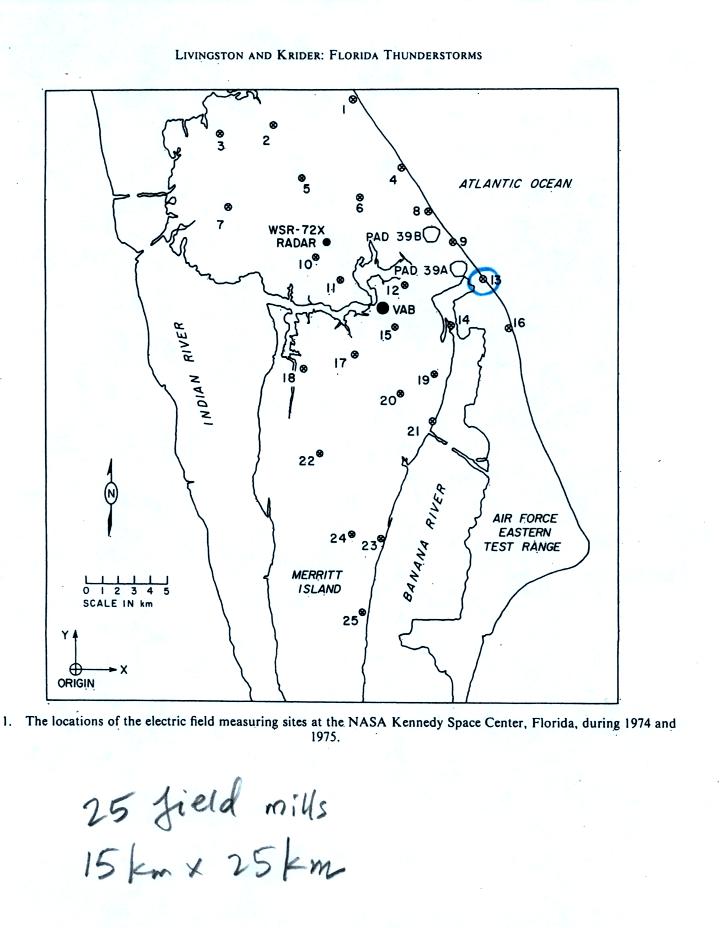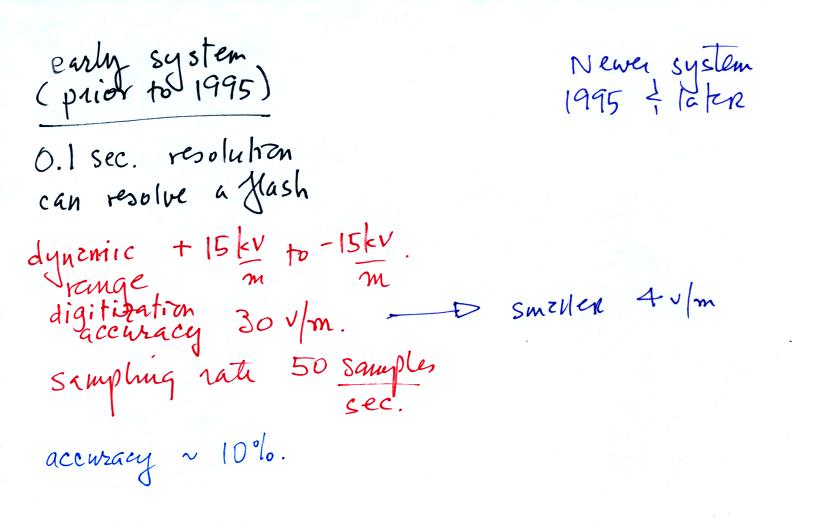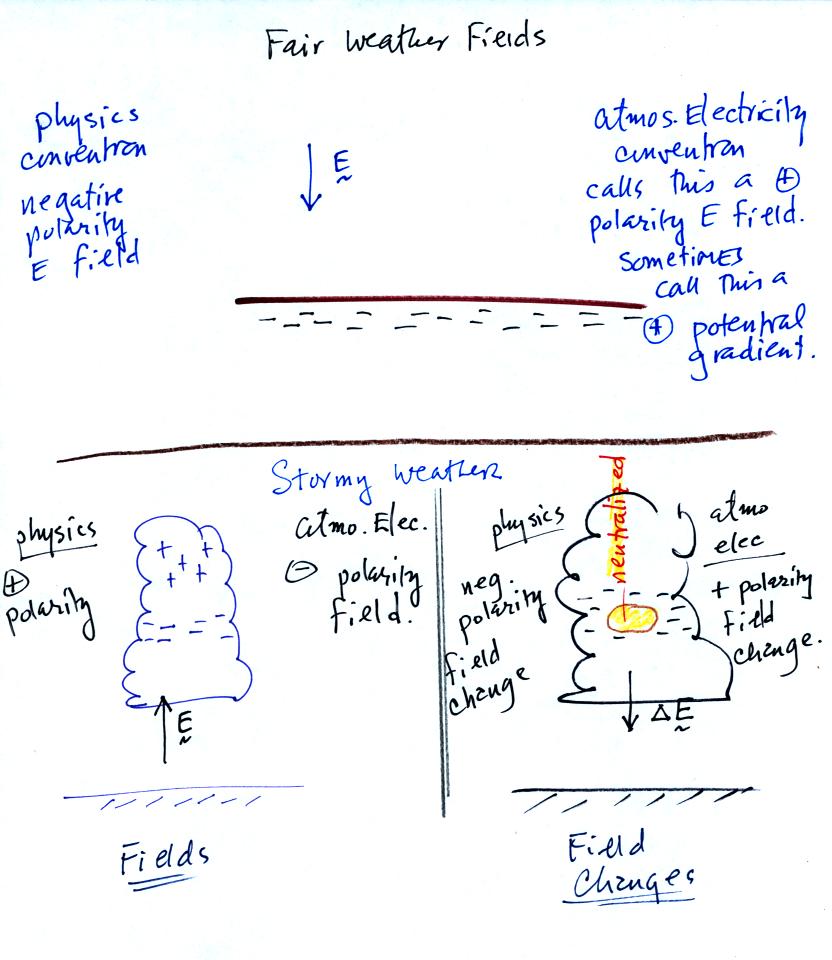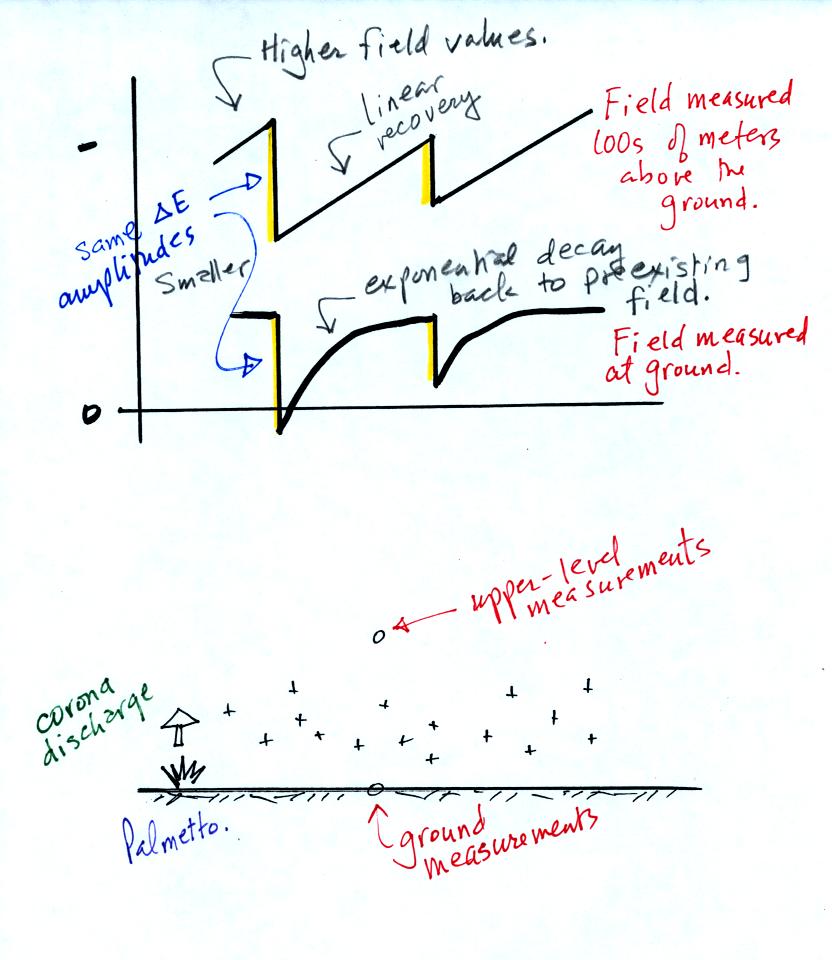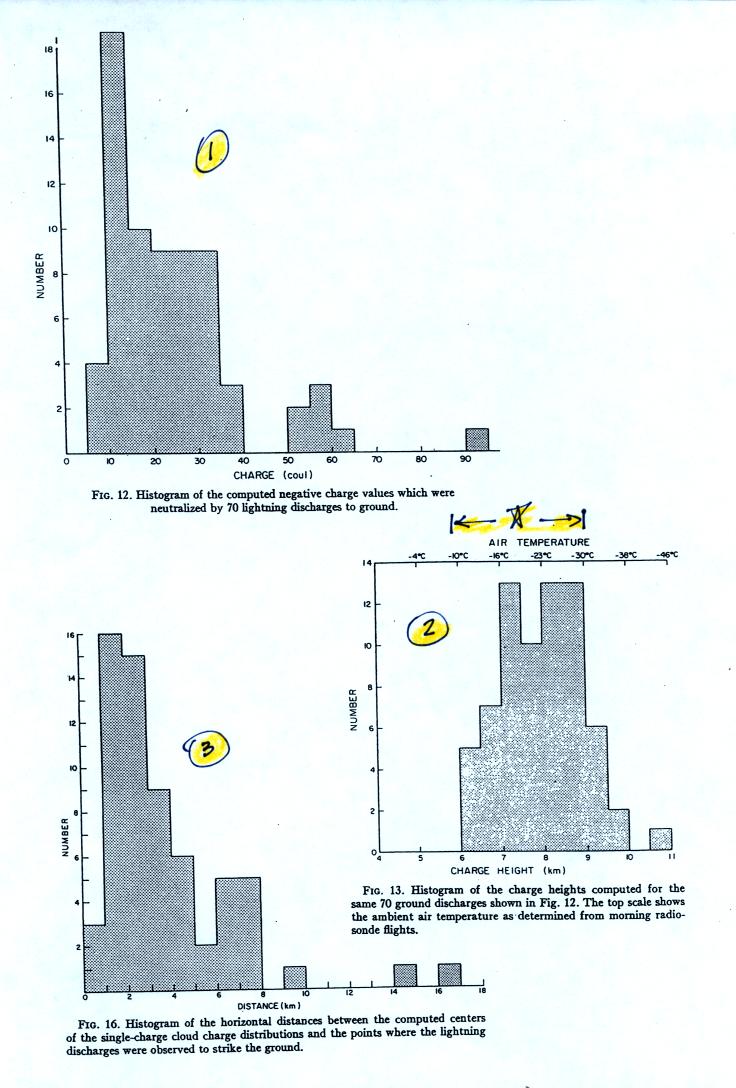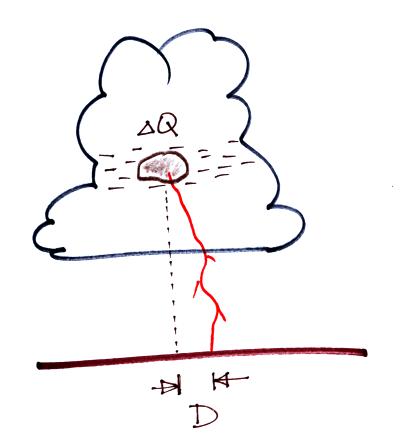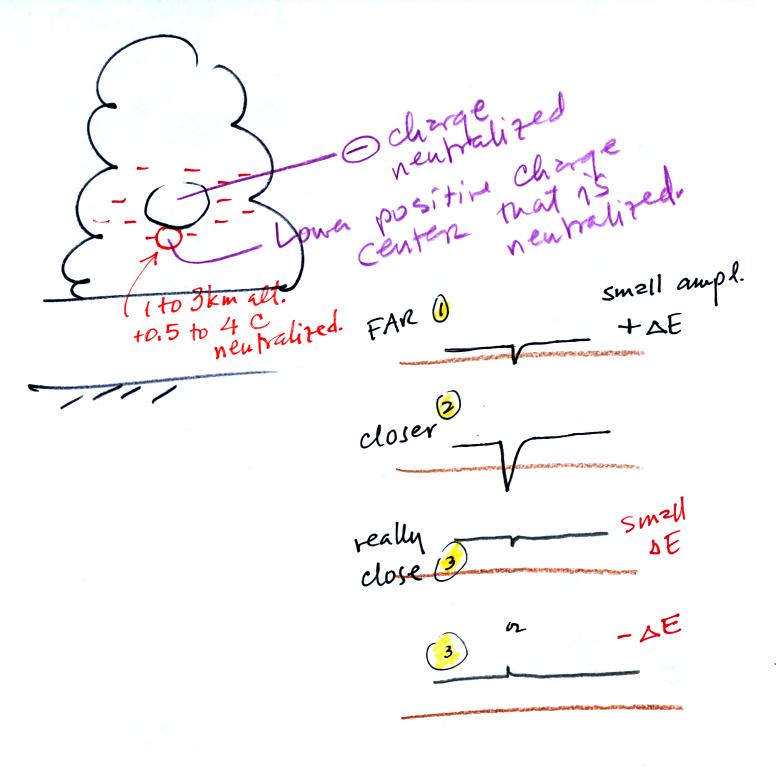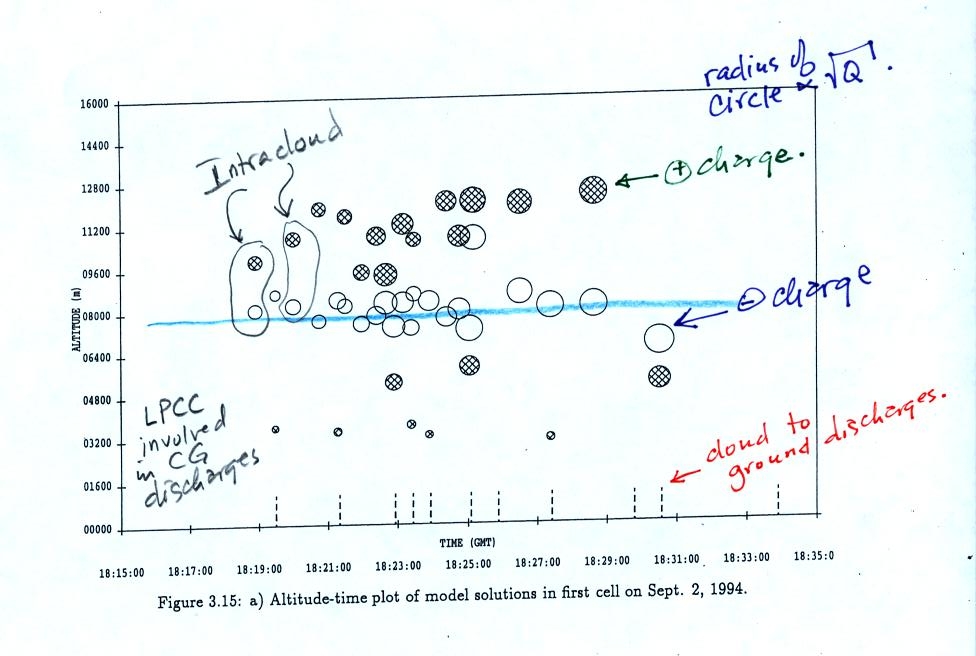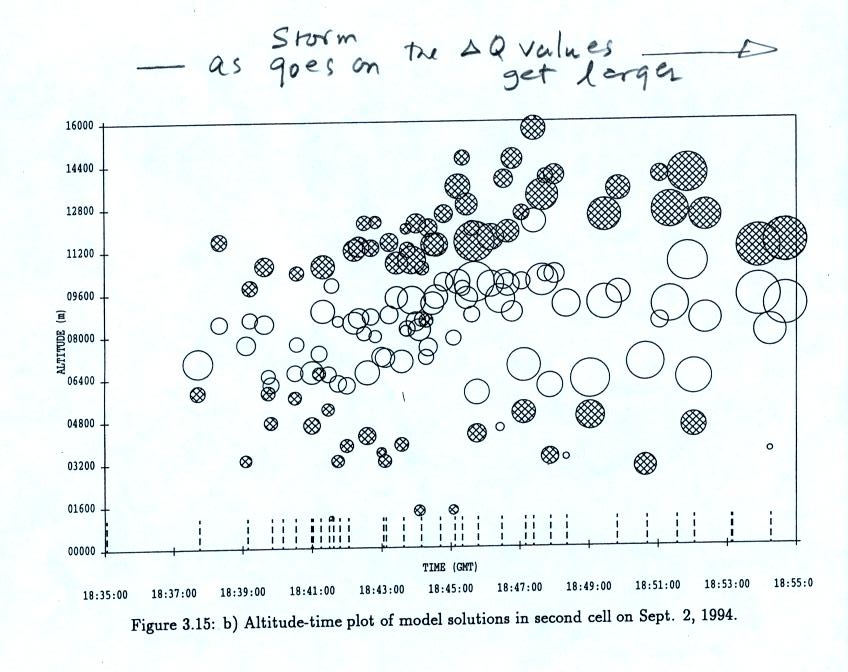Tuesday Feb. 24, 2009
Here are the figures from class. I'll try to add some more
comments soon.
The field mill network at the Kennedy Space Center used for 1974
and 1975 experiments.
Field mill network characteristics
The electric field polarity convention used in atmospheric
electricity research is often the opposite of the common physics
convention.
Examples of lightning fields measured at several field mill sites
during small thunderstorms.

Lightning fields from a large thunderstorm. The histogram shows
the evolution of the flashing rate during the storm
Fields at the ground are usually lower than fields measured just a
few hundred meters above the ground. Space charge from corona
discharge at the ground limits the amplitudes of fields at the ground
and affects the shape of the field recovery between flashes.
The single spherical charge model. By minimizing the chi-squared
function (the sum of the differences between measured and calculated
fields) one hopes to be able to determine the magnitude of the charge
neutralized by a lightning flash and its locating in space.
Some of the results obtained using the single charge model. Fig.
1 shows the magnitude of the charge neturalized. Fig. 2 shows
that this charge was largely found between 6 and 9 or 10 km altitude,
in the -10 to -35 C temperature range. Fig. 3 shows that 75% of
cloud-to-ground discharges strike the ground at a distance of 5 km (3
miles) or less from the center of the charge neutralized by the
flash. 95% of the discharges strike the ground within 8 km (5
miles) of the charge center. Refer also to the figure below.
Instead of getting larger as you get closer to the storms center,
field charges at the ground are often either very small or of opposite
polarity. This suggested that a lower volume of positive charge
might be involved in cloud-to-ground discharges. This led to the
development of a 2 charge model, illustrated below.
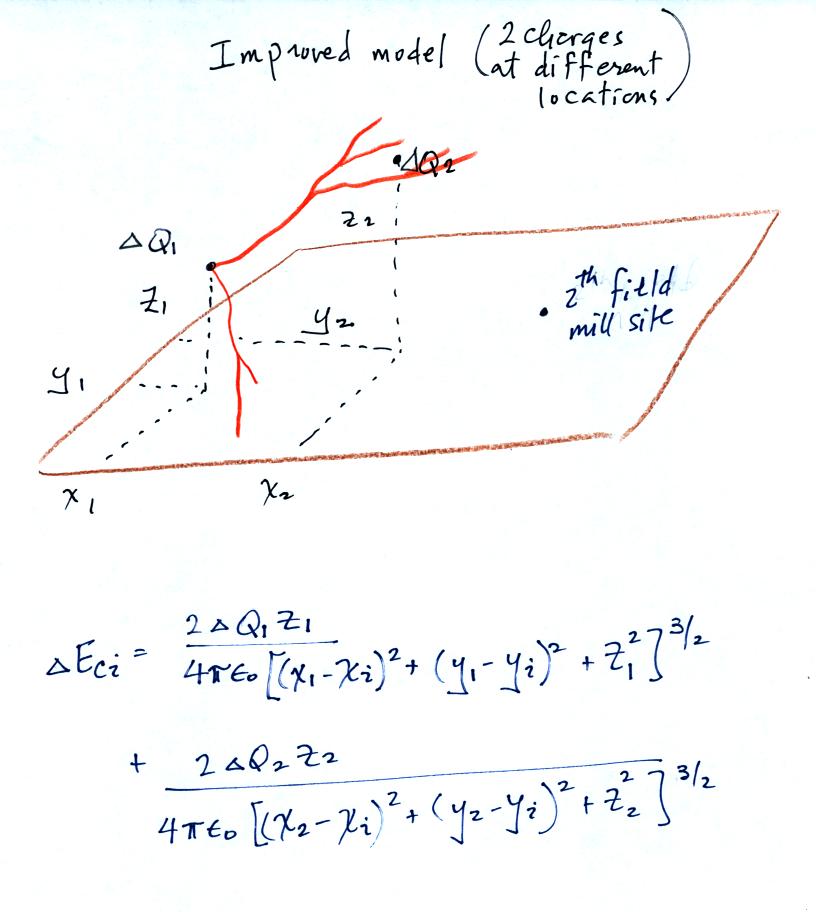
It's similar to the one charge model. In this case thought, there
are 8 unknowns.
A lower positive charge center seems to be involved in most
cloud-to-ground discharges
